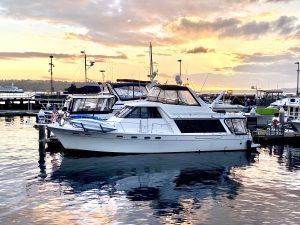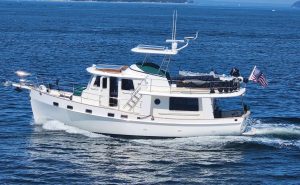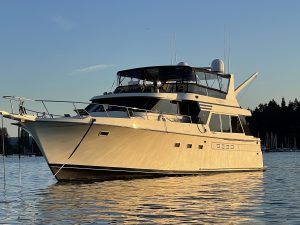As the air turns brisk and the days grow shorter, boat owners face the inevitable reality of winterizing their vessels. One crucial aspect often overlooked is the heating system. Ensuring your boat’s heating system is set up safely is not only essential for comfort during winter cruises but also for protecting your boat from freezing temperatures. In this comprehensive guide, we’ll walk you through the steps to safely and effectively set up your boat’s heating system for the upcoming winter season
- Choose the Right Heating System:
Selecting the appropriate heating system is the foundation of a successful winter setup. There are several options available, including diesel heaters, electric heaters, and propane heaters. Consider factors such as your boat’s size, insulation, and heating preferences (forced air or radiant heat) when making this decision. - Adequate Ventilation:
Proper ventilation is crucial when using any heating system on a boat. Ensure that your boat’s heating system is well-ventilated to prevent the buildup of carbon monoxide, which can be life-threatening. Install carbon monoxide detectors in key areas of the boat, and regularly check their functionality. - Inspect and Maintain Your Heating System:
Before winter sets in, conduct a thorough inspection of your heating system. Clean or replace air filters, check fuel lines for leaks, and ensure all components are in good working order. If you’re not confident in your ability to perform this maintenance, consider hiring a professional marine technician. - Fuel Safety:
If you’re using a diesel or propane heater, store fuel in a well-ventilated, secure area away from living spaces. Ensure all fuel connections are tight and free from leaks. Regularly inspect fuel lines and replace any damaged components. - Fire Safety:
Invest in fire extinguishers designed for marine use and place them strategically throughout your boat. Make sure everyone on board knows their location and how to use them. Additionally, keep flammable materials, such as paper towels or cleaning supplies, away from heating equipment. - Smoke and Carbon Monoxide Alarms:
Install smoke detectors and carbon monoxide alarms in sleeping areas and the main cabin. Regularly test these alarms and replace batteries as needed. - Check for Leaks:
Inspect your boat for any gaps, cracks, or areas where cold air could seep in. Seal these gaps with weatherstripping or insulation to keep your boat warmer and more energy-efficient. - Monitor Temperature:
Invest in a digital thermostat to regulate the temperature on your boat. This not only ensures comfort but also prevents your heating system from running unnecessarily, conserving fuel or electricity. - Have an Emergency Plan:
Always have an emergency plan in place. Know how to shut off your heating system quickly if a problem arises. Keep emergency contact numbers handy and communicate your winter sailing plans with someone onshore.
Preparing your boat’s heating system for the winter season is a vital step in ensuring both your comfort and your boat’s safety. By carefully choosing the right heating system, conducting regular maintenance, and prioritizing safety measures, you can enjoy the serenity of winter boating while keeping the cold at bay. Remember that safety should always be your top priority, and never hesitate to seek professional assistance when in doubt.




